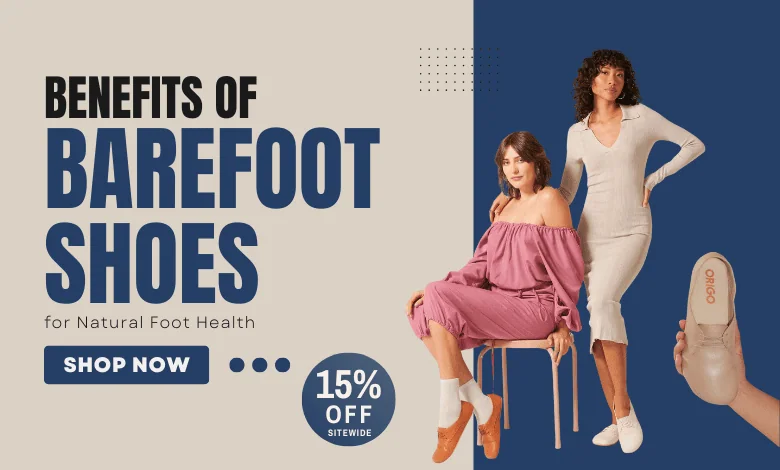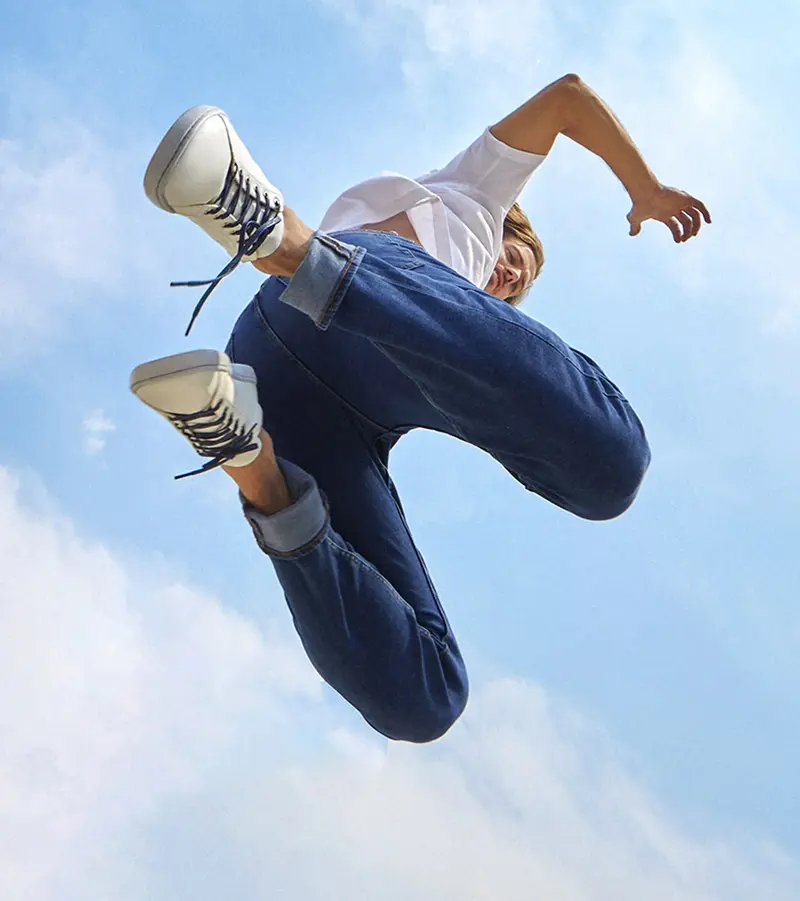Exploring the Benefits of Barefoot Shoes for Natural Foot Health

The Science Behind Barefoot Shoes: Why Less Is More for Your Feet
Understanding Foot Mechanics: The Role of Barefoot Shoes
The human foot is a marvel of engineering, designed for optimal functionality and support. Traditional footwear often neglects the natural anatomical structure of the foot, leading to a host of issues such as poor posture, muscle atrophy, and joint pain. Barefoot shoes, characterized by their ultra-thin soles and minimal cushioning, aim to rectify this by allowing the foot to move as nature intended. By promoting a more natural gait, barefoot shoes encourage the biomechanics that our feet were designed for flexibility, balance, and strength. Through a better understanding of foot mechanics, we can appreciate how barefoot footwear integrates seamlessly with these natural movements. This footwear allows for an increased sensory feedback loop, as a thinner sole provides more direct contact with the ground, enabling the individual to adjust their balance and posture instinctively.
Biomechanical Benefits: From Impact to Balance
Modern athletic footwear often prioritizes cushioning and shock absorption over biomechanics, which can mask the proprioceptive feedback our feet need to function optimally. In contrast, barefoot shoes promote a more grounded sense of balance, align with a neutral foot position, and encourage midfoot striking an impact pattern that reduces stress on the joints. Research has demonstrated that runners who switch to minimalist footwear experience a shift in their gait, leading to lower rates of injuries typical in heavily cushioned shoes. These benefits extend beyond just runners; walking, standing, and performing daily activities become more biomechanically sound. Enhanced balance, achieved through consistent use of barefoot shoes, translates to improved stabilization of the entire kinetic chain, affecting the ankles, knees, and hips through more efficient movement patterns.
The Evolution of Footwear: A Historical Perspective
Footwear, though continually evolving, often strays from the principles of natural foot function. Historical evidence suggests that ancient civilizations utilized simple sandals or went barefoot, which allowed for the development of strong foot muscles and diverse foot mechanics. Over the centuries, the industrial revolution and the advent of modern synthetic materials shifted the focus towards style and mass production rather than functionality. Today, many people suffer from foot-related problems linked to the restrictive nature of conventional shoes. By revisiting the fundamentals of our ancestral footwear choices and recognizing how our relationship with shoes has changed, we can understand the renaissance of barefoot shoes as a response to modern health challenges. The re-emergence of minimalist footwear is not merely a trend but a necessary return to supportive and foot-friendly designs that prioritize health and wellness.
Healthier Feet, Happier Life: The Physical and Mental Perks of Going Barefoot
Strengthening Foot Muscles: Building a Foundation for Healthy Mobility
One of the most compelling reasons to adopt barefoot shoes lies in their ability to strengthen the intrinsic muscles of the foot. Traditional footwear can weaken these muscles, leading to a cycle of dependency on external support structures like arches and cushioning. By wearing barefoot shoes, the foot is encouraged to work harder, activating and strengthening small muscles often neglected by ample padding. As a result, individuals often experience improved foot strength and flexibility, enhanced arch support, and an overall foundation for more comfortable mobility. This newfound strength can play a critical role in combating the pains of plantar fasciitis, flat feet, and other common foot ailments, paving the way for a more active lifestyle and less chronic pain.
Connecting with Nature: The Psychological Benefits of Barefoot Walking
Beyond the physical advantages, barefoot shoes facilitate a profound connection with our environment. Walking barefoot allows individuals to feel the varied textures of natural surfaces, from grass and sand to uneven terrain. This sensory experience not only enhances physical awareness but also has a positive impact on mental health. The act of walking barefoot is often associated with a sense of freedom and grounding, reducing stress and promoting mindfulness. Numerous studies suggest that natural exposure felt through the feet can alleviate anxiety, boost mood, and even improve cognitive function. Thus, the shift to barefoot shoes can be seen as more than just an anatomical choice; it also supports holistic wellness, inviting individuals to experience their surroundings authentically and wholly.
Injury Prevention: How Barefoot Shoes Can Help Avoid Common Pains
Injury often results from repeated impacts and improper foot mechanics, which are exacerbated by excessive cushioning and support in traditional footwear. Barefoot shoes address this issue by encouraging a natural foot strike pattern that minimizes injury risk. The minimalist design allows for improved proprioception, helping wearers develop better body awareness and movement patterns that enhance functional strength. Furthermore, the transition to barefoot shoes can lead to a reduction in common injuries such as shin splints, runner’s knee, and Achilles tendonitis. Those engaging in outdoor activities and sports will find the benefits of barefoot shoes particularly pertinent enabling them to enjoy a more efficient movement pattern while significantly lowering the chances of debilitating injuries that can sideline them for extended periods.
Choosing the Right Pair: A Guide to Selecting Barefoot Shoes
What to Look For: Key Features of Effective Barefoot Footwear
When considering barefoot shoes, it’s crucial to understand the essential features that distinguish them from conventional footwear. A high-quality barefoot shoe should have a wide toe box that allows the toes to splay naturally, encouraging optimal balance and stability. Additionally, a flexible sole is paramount, enabling the foot to articulate freely during movement. Look for materials that offer breathability and moisture-wicking properties, as well as lightweight construction; these characteristics contribute to overall comfort and usability. Furthermore, consider the level of traction; shoes designed for varied terrains should feature robust outsoles that provide grip whilst still allowing for a natural foot movement. Importantly, not all barefoot shoes are the same, so recognizing these key characteristics will ensure you make an informed choice tailored to your activities and lifestyle.
Top Brands and Models: Finding Your Perfect Match
The market for barefoot shoes has expanded dramatically in recent years, with a plethora of brands offering innovative designs aimed at different activities and preferences. Some popular brands include Vivobarefoot, Merrell, Xero Shoes, and Vibram. Each of these companies has engineered their shoes to embrace minimalist ideals while catering to specific needs be it running, hiking, or everyday wear. For instance, the Vivobarefoot Barfoot might appeal to urban dwellers, while the Merrell Trail Glove serves trail runners perfectly. Always pay attention to customer reviews and seek out community feedback, as wearers often share invaluable insights regarding fit, comfort, and performance. The right shoe should cater to your foot type, activity level, and personal taste, fostering both comfort and confidence as you shed the confines of traditional footwear.
Transitioning to Barefoot Shoes: Tips for Making the Switch Smooth
Transitioning to barefoot shoes requires patience and an attentive approach, as your feet and body will need time to adapt to this more natural way of movement. It is advisable to start slowly considering short periods during which you wear your new shoes, gradually increasing the duration as your feet acclimate. Incorporating foot strengthening exercises can enhance the transition, focusing on activities that strengthen the arches, improve flexibility, and prepare your feet for increased activity. Additionally, pay attention to your body’s response if you feel discomfort, it might be a sign to scale back. Remember, a deliberate transition allows your foot muscles to adapt without leading to further injuries. Embrace the learning curve of this exciting journey towards better foot health, approaching it with a willingness to explore and understand your body’s needs.
Real-World Experiences: Testimonials and Success Stories
Athletes and Barefoot Shoes: Performance Enhancement Insights
Athletes are often at the forefront of barefoot shoe trends, with many experiencing measurable performance improvements after making the switch. Runners, in particular, have shared stories of personal best times achieved with minimalist footwear citing better balance, reduced injuries, and increased agility. Many elite athletes endorse barefoot shoes, emphasizing the benefits they have experienced in terms of foot strength and enhanced sensory feedback, which translates into more refined and efficient movements on race day. With research indicating that barefoot running may aid in energy efficiency, more and more athletes are integrating barefoot shoes into their training, paving the way for a new generation of competitors, one that favors function and natural mechanics over traditional padded shoes.
Everyday Users: Personal Transformations and Health Improvements
Feedback from everyday users further illustrates the benefits of making the switch to barefoot shoes. Many individuals report significant improvements in foot health, citing reductions in chronic pain conditions and increased comfort during daily activities. Testimonials reveal accounts of long-time sufferers of plantar fasciitis discovering relief through the use of minimalist shoes, while others have noted improvements in posture and overall mobility. These accounts illustrate that barefoot shoes are accessible to anyone seeking to reclaim their foot health, regardless of their activity levels or fitness history. Personal stories resonate deeply within communities, fueling interest and exploration into this alternative footwear option and its implications for lasting wellness improvements.
Expert Opinions: What Podiatrists Say About Barefoot Shoes
As barefoot shoes gain traction, podiatrists and foot specialists have weighed in on the topic, offering both insight and perspective. Many endorse the benefits of barefoot shoes, particularly for individuals with certain foot conditions, as they allow for more natural movement patterns. However, they stress the importance of selecting the right shoe and transitioning adequately. Experts caution against jumping straight into barefoot shoes without preparation, as improper use can lead to strain or injuries. Listening to professional advice, individuals can develop a balanced understanding of when and how to wear barefoot shoes, ensuring optimal benefits while minimizing risks. Ultimately, podiatrists emphasize foot health as a key component of overall wellbeing, making informed footwear choices paramount for a life lived actively and healthily.
Check out for more insightful articles that will leave you informed and inspired.







